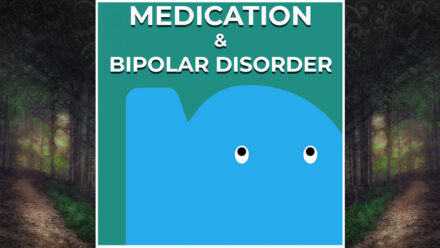
These 33 tips for tapering off your medication have been drawn up by psychiatrist Jim van Os and expert in medication tapering Dr. Peter Groot. These tips can help you on your way to stopping your medication. They also provide valuable information when considering whether tapering is wise, how to prepare and how to taper off your medication safely.
Assumptions
1. Psychosis sensitivity and bipolar mood sensitivity are human – every person has some degree of these sensitivities.
2. Some people have a very low level of sensitivity, other people have a very high level of sensitivity.
3. If you have a high level of sensitivity, you can occasionally become psychotic under stress (i.e. develop psychotic symptoms that are distressing).
4. So every person has to learn to live with his/her level of psychosis and bipolar susceptibility.
5. This can be a painful and long process at times – but it can be done.
6. Modern psychiatry aims to be recovery-oriented: to help people experience a meaningful existence. By learning to deal with sensitivity to psychosis, you can create ‘free’ space in your existence, next to ‘vulnerability’ and ‘illness’.
7. Recovery is an individual quest; you can’t know in advance what will or won’t help you – experiments are crucial on the road to recovery, including experiments with the medication.
Medication
8. Medication can help in the acute phase of a psychotic episode.
9. Medication can also help prevent another psychotic episode.
10. The ‘ Numbers Needed to Treat ‘ of lithium / antipsychotics in preventing a new manic / depressive episode is approximately 4. That is, of the four people who remained stable on medication over time, three had also remained stable on placebo (sugar pill).
Weaning off medication: Beware of the ‘sleeping tiger’ (rebound)
11. Most people want to phase out at some point: reduce or even stop. For 3 out of 4 people that may be a good idea – see rule 10.
12. You cannot know in advance whether phasing out is a good idea for you.
13. Whoever stops lithium/antipsychotics therefore takes a risk, but how great is that risk? It’s a calculated risk. The size of the risk depends on two things.
- Firstly, there is the risk that the original mental sensitivity will manifest itself again (called relapse or recurrence).
- Secondly, the risk is determined by the degree of oppositional tolerance that has arisen as a result of the (chronic) use of the medication. Oppositional tolerance is like a sleeping tiger. It’s about the phenomenon that your brain tries to neutralize the effects of the medication with adjustments in biology. If you stop taking the medication, the tiger wakes up and you can go into a severe state of withdrawal. This withdrawal often resembles the original psychological crisis (depression, mania, psychosis) but is not caused by your own mental sensitivity, but by the underlying ‘oppositional tolerance’ in the brain. There is then a rebound , not a relapse .
How do you recognize oppositional tolerance ?
You can often recognize whether oppositional tolerance has arisen by the following:
- You are quickly out of balance with symptoms (due to rebound) and/or other withdrawal symptoms if you have forgotten your medication a few times;
- You experience less and less protection from the medication over time;
- Paradoxical effects of the medication (all kinds of mental symptoms that you have not had before that seem to be caused by the medication), for example if the dose is changed or if you are given another medication;
14. A patient who is mentally competent may want to take a calculated risk to taper off medication. But the greater the indications of oppositional tolerance , the greater the risk and therefore the slower the medication should be tapered.
15. So, you can successfully phase out:
- In consultation with your practitioner
- In gradual steps
- Taking into account, as far as possible, the degree of oppositional tolerance
- A small amount of withdrawal is to be expected during tapering your medication. However, if you encounter severe withdrawal symptoms during the tapering process, do not continue with the withdrawal, but first stabilize at the dose you had reached at which no withdrawal had yet occurred. After that you can decide to continue (but for example slower or more cautiously) or to stay on that dose for the time being.
Reducing in consultation with the practitioner
16. Explain your wish to taper to your treating physician. It is important that your doctor thinks along and stands behind you – even if you are taking a risk in the context of recovery. The doctor will help you monitor and guide you. It really is a matter of working together and deciding together.
17. Under the law in most countries, a doctor cannot simply refuse to help patients who are mentally competent and willing to take a calculated risk – in the context of recovery or for other reasons that are compelling to him or her – to reduce / taper medication.
18. Under the law in most countries, a physician cannot discontinue care because he disagrees with a competent patient’s decision to conduct an informed experiment with the medication.
19. The chance of a successful reduction is greater if you:
- Reduce in consultation with your practitioner;
- Try to get an idea of the degree of oppositional tolerance ;
- Take enough time to gradually taper off;
- Make sure the tapering process is well monitored;
- Adjust the dose in time if things are going too fast;
- Have understanding and acceptance in connection with your vulnerability and have been able to give it a place in your story;
- Have learned the importance of regularity, structure, nutrition, sports/exercise, sleep and things like meditation and yoga;
- Have a network around you of people you trust, who know and in principle understand your vulnerability, to whom you can tell your story, who have experienced this themselves, with whom you are connected;
- Have a life / circumstances that are reasonably in order, that is free of major stress or major transitions;
- Have made a good crisis plan that everyone (you, partner/network, GP, mental health care) is aware of and willing to cooperate with.
Gradually reduce
20. Very important: Take enough time!
- Make a plan in advance with your practitioner, so that you know what you are working towards;
- The dose reduction steps should not be too great and should get smaller and smaller towards the end – we call that ‘hyperbolic’ taper (i.e. a reduce with a certain percentage (eg 5%) NOT a certain amount (eg 10mg);
- The duration of the tapering is related to, among other things, the period that you have taken the medication, the dose you used before you decided to taper off and the degree of indications of oppositional tolerance ;
- Each step means that you decrease a certain percentage and use that dose until you have stabilized there (for example, one to two months). The percentage reduction varies from person to person. Some people start with 20% or 25% steps, then 10% steps, but for some people this will be too fast, for others too slow. So it’s a matter of careful trial-and-error. Many people know from experience how sensitive they are to medication withdrawal – for example, based on how they reacted if they forgot to take the medication for a few days.
21. With gradual tapering you prevent withdrawal symptoms or relapse.
22. It is not easy (also for your doctor) to distinguish between relapse and withdrawal symptoms – however relapse needs a different adjustment in the tapering schedule than withdrawal symptoms.
23. It is therefore better to ensure that withdrawal symptoms occur as little as possible and preferably not at all.
24. You do that by gradually tapering off at a pace that suits you . You don’t know exactly what that pace is in advance – and your doctor can’t know it either.
25. That uncertainty does not have to be a problem if you and your practitioner make sure that you keep a good record of how things are going for you during the tapering. Good (self) monitoring must therefore be ensured.
Monitoring and adjustment
26. Pay close attention during the reduction: how are you doing?
Restlessness/fear/irritability or things like that means that things are going too fast. Then consult with your practitioner to find the approach that suits you best in your situation: Decrease the tapering rate or stabilize at the current dose for the time being and then continue tapering again, but at a slower pace. Or continue on the dose you reached for the time being.
A small amount of withdrawal is to be expected during tapering. However, if you encounter severe withdrawal symptoms during the withdrawal process, do not continue with the withdrawal, but first stabilize at the dose you had reached at which no withdrawal had yet occurred. After that you can decide to continue (but for example slower or more cautiously) or to stay on that dose for the time being.
27. As you stabilize (ie stay on the same dose for a while) the withdrawal symptoms will subside over time. Do not go back to a higher dose too quickly – this can also cause additional symptoms due to new build-up effects of medication. When things are calm enough after stabilization, you can continue to taper off, but at a slower pace.
28. What you do in this way with your doctor during the tapering process, is to make adjustments in time if necessary. To make this possible, it is important that your practitioner can prescribe you the medication you need for this.
Tapering with special tapering strips
Because pharmaceutical companies have never brought enough different doses on the market to be able to taper slowly, this has been very difficult or even impossible for practitioners until now.
29. With the advent of so-called taperingmedication – tapering stripsand stabilization strips – this is now possible. Practitioners can prescribe the tapering medication in consultation with you and adjust them very flexibly during tapering if necessary.
30. Tapering medication is made and dispensed at the request of a doctor by the Regenboog Apotheek in Bavel. There are currently no comparable alternatives.
For information about tapering strips see: www.taperingstrip.com
31. With the tapering medication comes a self-monitoring form that you must complete once a day. It’s not difficult and it won’t take you much time. If you do that, you will help both yourself and your practitioner to see how the taper is going for you.
- As long as it’s going well, you can continue to taper off.
- As soon as you notice that you are getting new complaints or that existing complaints are worsening, contact your practitioner to discuss whether and how the tapering will be adjusted.
By doing that right, you ensure that the tapering continues to go as smoothly as possible for you.
Alternatives to Medication
32. There are alternative therapies to medication: voice hearing groups, recovery groups, lifestyle groups, running therapy, meditation, body-oriented work, psychotherapy.
33. The main thing with all these therapies is they work because (i) there is a professional with whom you feel a connection, (ii) who give a treatment you believe in, (iii) who you can turn to and (iv) who are bona fide (i.e. who have an official recognition or quality indicator).




